



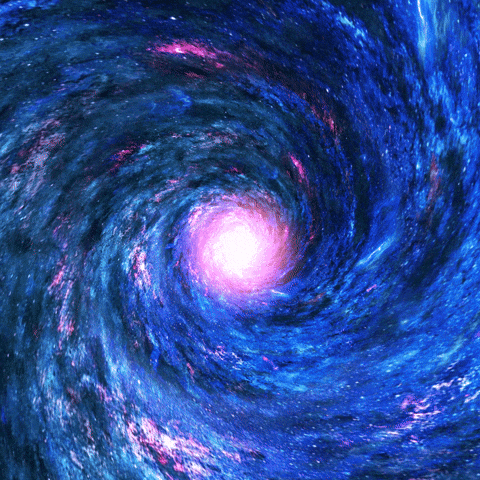
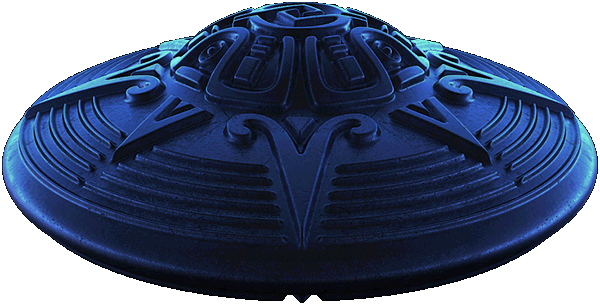

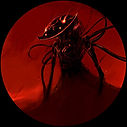
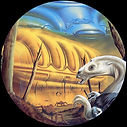

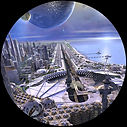

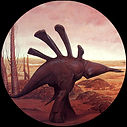

Jupiter
Jupiter is the fifth planet from the Sun, and the largest in the solar system – more than twice as massive as the other planets combined.
Jupiter Facts
Jupiter is a world of extremes. It's the largest planet in our solar system – if it were a hollow shell, 1,000 Earths could fit inside. It's also the oldest planet, forming from the dust and gases left over from the Sun's formation 4.6 billion years ago. But it has the shortest day in the solar system, taking only 10.5 hours to spin around once on its axis.
Unable to render the provided source
Introduction
Jupiter's signature stripes and swirls are actually cold, windy clouds of ammonia and water, floating in an atmosphere of hydrogen and helium. The dark orange stripes are called belts, while the lighter bands are called zones, and they flow east and west in opposite directions. Jupiter’s iconic Great Red Spot is a giant storm bigger than Earth that has raged for hundreds of years.
The king of planets was named for Jupiter, king of the gods in Roman mythology. Most of its moons are also named for mythological characters, figures associated with Jupiter or his Greek counterpart, Zeus.
Namesake
Jupiter, being the biggest planet, gets its name from the king of the ancient Roman gods.
Potential for Life
Jupiter’s environment is probably not conducive to life as we know it. The temperatures, pressures, and materials that characterize this planet are most likely too extreme and volatile for organisms to adapt to.
While planet Jupiter is an unlikely place for living things to take hold, the same is not true of some of its many moons. Europa is one of the likeliest places to find life elsewhere in our solar system. There is evidence of a vast ocean just beneath its icy crust, where life could possibly be supported.
Size and Distance
With a radius of 43,440.7 miles (69,911 kilometers), Jupiter is 11 times wider than Earth. If Earth were the size of a grape, Jupiter would be about as big as a basketball.
From an average distance of 484 million miles (778 million kilometers), Jupiter is 5.2 astronomical units away from the Sun. One astronomical unit (abbreviated as AU), is the distance from the Sun to Earth. From this distance, it takes sunlight 43 minutes to travel from the Sun to Jupiter.
Orbit and Rotation
Jupiter has the shortest day in the solar system. One day on Jupiter takes only about 10 hours (the time it takes for Jupiter to rotate or spin around once), and Jupiter makes a complete orbit around the Sun (a year in Jovian time) in about 12 Earth years (4,333 Earth days).
Its equator is tilted with respect to its orbital path around the Sun by just 3 degrees. This means Jupiter spins nearly upright and does not have seasons as extreme as other planets do.
Moons
With four large moons and many smaller moons, Jupiter forms a kind of miniature solar system.
Jupiter has 95 moons that are officially recognized by the International Astronomical Union. The four largest moons – Io, Europa, Ganymede, and Callisto – were first observed by the astronomer Galileo Galilei in 1610 using an early version of the telescope. These four moons are known today as the Galilean satellites, and they're some of the most fascinating destinations in our solar system.
Io is the most volcanically active body in the solar system. Ganymede is the largest moon in the solar system (even bigger than the planet Mercury). Callisto’s very few small craters indicate a small degree of current surface activity. A liquid-water ocean with the ingredients for life may lie beneath the frozen crust of Europa, the target of NASA's Europa Clipper mission slated to launch in 2024.
Rings
Discovered in 1979 by NASA's Voyager 1 spacecraft, Jupiter's rings were a surprise. The rings are composed of small, dark particles, and they are difficult to see except when backlit by the Sun. Data from the Galileo spacecraft indicate that Jupiter's ring system may be formed by dust kicked up as interplanetary meteoroids smash into the giant planet's small innermost moons.
Formation
Jupiter took shape along with rest of the solar system about 4.6 billion years ago. Gravity pulled swirling gas and dust together to form this gas giant. Jupiter took most of the mass left over after the formation of the Sun, ending up with more than twice the combined material of the other bodies in the solar system. In fact, Jupiter has the same ingredients as a star, but it did not grow massive enough to ignite.
About 4 billion years ago, Jupiter settled into its current position in the outer solar system, where it is the fifth planet from the Sun.
Unable to render the provided source
A 3D model of Jupiter, a gas giant planet.
NASA Visualization Technology Applications and Development (VTAD)
Structure
The composition of Jupiter is similar to that of the Sun – mostly hydrogen and helium. Deep in the atmosphere, pressure and temperature increase, compressing the hydrogen gas into a liquid. This gives Jupiter the largest ocean in the solar system – an ocean made of hydrogen instead of water. Scientists think that, at depths perhaps halfway to the planet's center, the pressure becomes so great that electrons are squeezed off the hydrogen atoms, making the liquid electrically conducting like metal. Jupiter's fast rotation is thought to drive electrical currents in this region, with the spinning of the liquid metallic hydrogen acting like a dynamo, generating the planet's powerful magnetic field.
Deeper down, Jupiter's central core had long been a mystery. Scientists theorized Jupiter was a mostly homogeneous mix of hydrogen and helium gases, surrounding a small, solid core of heavier elements – ice, rock, and metal formed from debris and small objects swirling around that area of the embryonic solar system 4 billion years ago.
NASA’s Juno spacecraft, measuring Jupiter’s gravity and magnetic field, found data suggesting the core is much larger than expected, and not solid. Instead, it’s partially dissolved, with no clear separation from the metallic hydrogen around it, leading researchers to describe the core as dilute, or “fuzzy.”
Surface
As a gas giant, Jupiter doesn’t have a true surface. The planet is mostly swirling gases and liquids. While a spacecraft would have nowhere to land on Jupiter, it wouldn’t be able to fly through unscathed either. The extreme pressures and temperatures deep inside the planet crush, melt, and vaporize spacecraft trying to fly into the planet.
Atmosphere
Jupiter's appearance is a tapestry of colorful stripes and spots – the cloud bands that encircle the planet, and the cyclonic storms dotting it from pole to pole. The gas planet likely has three distinct cloud layers in its "skies" that, taken together, span about 44 miles (71 kilometers). The top cloud is probably made of ammonia ice, while the middle layer is likely made of ammonium hydrosulfide crystals. The innermost layer may be made of water ice and vapor.
The vivid colors you see in thick bands across Jupiter may be plumes of sulfur and phosphorus-containing gases rising from the planet's warmer interior. Jupiter's fast rotation – spinning once every 10 hours – creates strong jet streams, separating its clouds into dark belts and bright zones across long stretches.
With no solid surface to slow them down, Jupiter's spots can persist for many years. Stormy Jupiter is swept by over a dozen prevailing winds, some reaching up to 335 miles per hour (539 kilometers per hour) at the equator. The Great Red Spot, a swirling oval of clouds twice as wide as Earth, has been observed on the giant planet for more than 300 years. More recently, three smaller ovals merged to form the Little Red Spot, about half the size of its larger cousin.
Findings from NASA’s Juno probe released in October 2021 provide a fuller picture of what’s going on below those clouds. Data from Juno shows that Jupiter’s cyclones are warmer on top, with lower atmospheric densities, while they are colder at the bottom, with higher densities. Anticyclones, which rotate in the opposite direction, are colder at the top but warmer at the bottom.
The findings also indicate these storms are far taller than expected, with some extending 60 miles (100 kilometers) below the cloud tops and others, including the Great Red Spot, extending over 200 miles (350 kilometers). This surprising discovery demonstrates that the vortices cover regions beyond those where water condenses and clouds form, below the depth where sunlight warms the atmosphere.
The height and size of the Great Red Spot mean the concentration of atmospheric mass within the storm potentially could be detectable by instruments studying Jupiter’s gravity field. Two close Juno flybys over Jupiter’s most famous spot provided the opportunity to search for the storm’s gravity signature and complement the other results on its depth.
With their gravity data, the Juno team was able to constrain the extent of the Great Red Spot to a depth of about 300 miles (500 kilometers) below the cloud tops.
Belts and Zones In addition to cyclones and anticyclones, Jupiter is known for its distinctive belts and zones – white and reddish bands of clouds that wrap around the planet. Strong east-west winds moving in opposite directions separate the bands. Juno previously discovered that these winds, or jet streams, reach depths of about 2,000 miles (roughly 3,200 kilometers). Researchers are still trying to solve the mystery of how the jet streams form. Data collected by Juno during multiple passes reveal one possible clue: that the atmosphere’s ammonia gas travels up and down in remarkable alignment with the observed jet streams.
Juno’s data also shows that the belts and zones undergo a transition around 40 miles (65 kilometers) beneath Jupiter’s water clouds. At shallow depths, Jupiter’s belts are brighter in microwave light than the neighboring zones. But at deeper levels, below the water clouds, the opposite is true – which reveals a similarity to our oceans.
Polar Cyclones Juno previously discovered polygonal arrangements of giant cyclonic storms at both of Jupiter’s poles – eight arranged in an octagonal pattern in the north and five arranged in a pentagonal pattern in the south. Over time, mission scientists determined these atmospheric phenomena are extremely resilient, remaining in the same location.
Juno data also indicates that, like hurricanes on Earth, these cyclones want to move poleward, but cyclones located at the center of each pole push them back. This balance explains where the cyclones reside and the different numbers at each pole.
Magnetosphere
The Jovian magnetosphere is the region of space influenced by Jupiter's powerful magnetic field. It balloons 600,000 to 2 million miles (1 to 3 million kilometers) toward the Sun (seven to 21 times the diameter of Jupiter itself) and tapers into a tadpole-shaped tail extending more than 600 million miles (1 billion kilometers) behind Jupiter, as far as Saturn's orbit. Jupiter's enormous magnetic field is 16 to 54 times as powerful as that of the Earth. It rotates with the planet and sweeps up particles that have an electric charge. Near the planet, the magnetic field traps swarms of charged particles and accelerates them to very high energies, creating intense radiation that bombards the innermost moons and can damage spacecraft.
Jupiter's magnetic field also causes some of the solar system's most spectacular aurorae at the planet's poles.

Europa Clipper Begins Journey to Jupiter’s Icy Moon
SpaceX
A SpaceX Falcon Heavy rocket carrying NASA’s Europa Clipper spacecraft lifts off from NASA’s Kennedy Space Center in Florida on Monday, Oct. 14, 2024.
Europa Clipper is the first mission designed to conduct a detailed study of Jupiter’s moon Europa to determine if it currently has habitable conditions. The spacecraft will travel 1.8 billion miles (2.9 billion km) to reach Jupiter in April 2030. It will orbit Jupiter and conduct 49 close flybys of Europa.
Follow Europa Clipper’s journey in NASA’s Eyes on the Solar System app.
Jupiter, the most massive planet of the solar system and the fifth in distance from the Sun. It is one of the brightest objects in the night sky; only the Moon, Venus, and sometimes Mars are more brilliant. Jupiter is designated by the symbol ♃.
When ancient astronomers named the planet Jupiter for the Roman ruler of the gods and heavens (also known as Jove), they had no idea of the planet’s true dimensions, but the name is appropriate, for Jupiter is larger than all the other planets combined. It takes nearly 12 Earth years to orbit the Sun, and it rotates once about every 10 hours, more than twice as fast as Earth; its colourful cloud bands can be seen with even a small telescope. It has a narrow system of rings and 92 known moons, one larger than the planet Mercury and three larger than Earth’s Moon. Some astronomers speculate that Jupiter’s moon Europa may be hiding an ocean of warm water—and possibly even some kind of life—beneath an icy crust.
Jupiter has an internal heat source; it emits more energy than it receives from the Sun. The pressure in its deep interior is so high that the hydrogen there exists in a fluid metallic state. This giant has the strongest magnetic field of any planet, with a magnetosphere so large that, if it could be seen from Earth, its apparent diameter would exceed that of the Moon. Jupiter’s system is also the source of intense bursts of radio noise, at some frequencies occasionally radiating more energy than the Sun. Despite all its superlatives, however, Jupiter is made almost entirely of only two elements, hydrogen and helium, and its mean density is not much more than the density of water.
crescent view of JupiterCrescent view of Jupiter, a composite of three images taken by Voyager 1 on March 24, 1979.
View Jupiter's images captured from the Long Range Reconnaissance Imager (LORRI) aboard the New Horizons spacecraftView of Jupiter created from images taken by the Long Range Reconnaissance Imager (LORRI) aboard the New Horizons spacecraft.
See all videos for this article
Knowledge about the Jovian system grew dramatically after the mid-1970s as a result of explorations by three spacecraft missions—Pioneers 10 and 11 in 1973–74, Voyager 1 and 2 in 1979, and the Galileo orbiter and probe, which arrived at Jupiter in December 1995. The Pioneer spacecraft served as scouts for the Voyagers, showing that the radiation environment of Jupiter was tolerable and mapping out the main characteristics of the planet and its environment. The greater number and increased sophistication of the Voyager instruments provided so much new information that it was still being analyzed when the Galileo mission began. The previous missions had all been flybys, but Galileo released a probe into Jupiter’s atmosphere and then went into orbit about the planet for intensive investigations of the entire system until September 2003. In July 2016, the Juno orbiter arrived at Jupiter for a mission expected to last two years. Other looks at the Jovian system were provided in late 2000 and early 2001 by the flyby of the Cassini spacecraft on its way to Saturn and in 2007 by the flyby of the New Horizons spacecraft on its way to Pluto. Observations of the impacts of the fragmented nucleus of Comet Shoemaker-Levy 9 with Jupiter’s atmosphere in 1994 also yielded information about its composition and structure.
Basic astronomical data
Jupiter has an equatorial diameter of about 143,000 km (88,900 miles) and orbits the Sun at a mean distance of 778 million km (483 million miles). The table shows additional physical and orbital data for Jupiter. Of special interest are the planet’s low mean density of 1.33 grams per cubic cm—in contrast with Earth’s 5.52 grams per cubic cm—coupled with its large dimensions and mass and short rotation period. The low density and large mass indicate that Jupiter’s composition and structure are quite unlike those of Earth and the other inner planets, a deduction that is supported by detailed investigations of the giant planet’s atmosphere and interior.